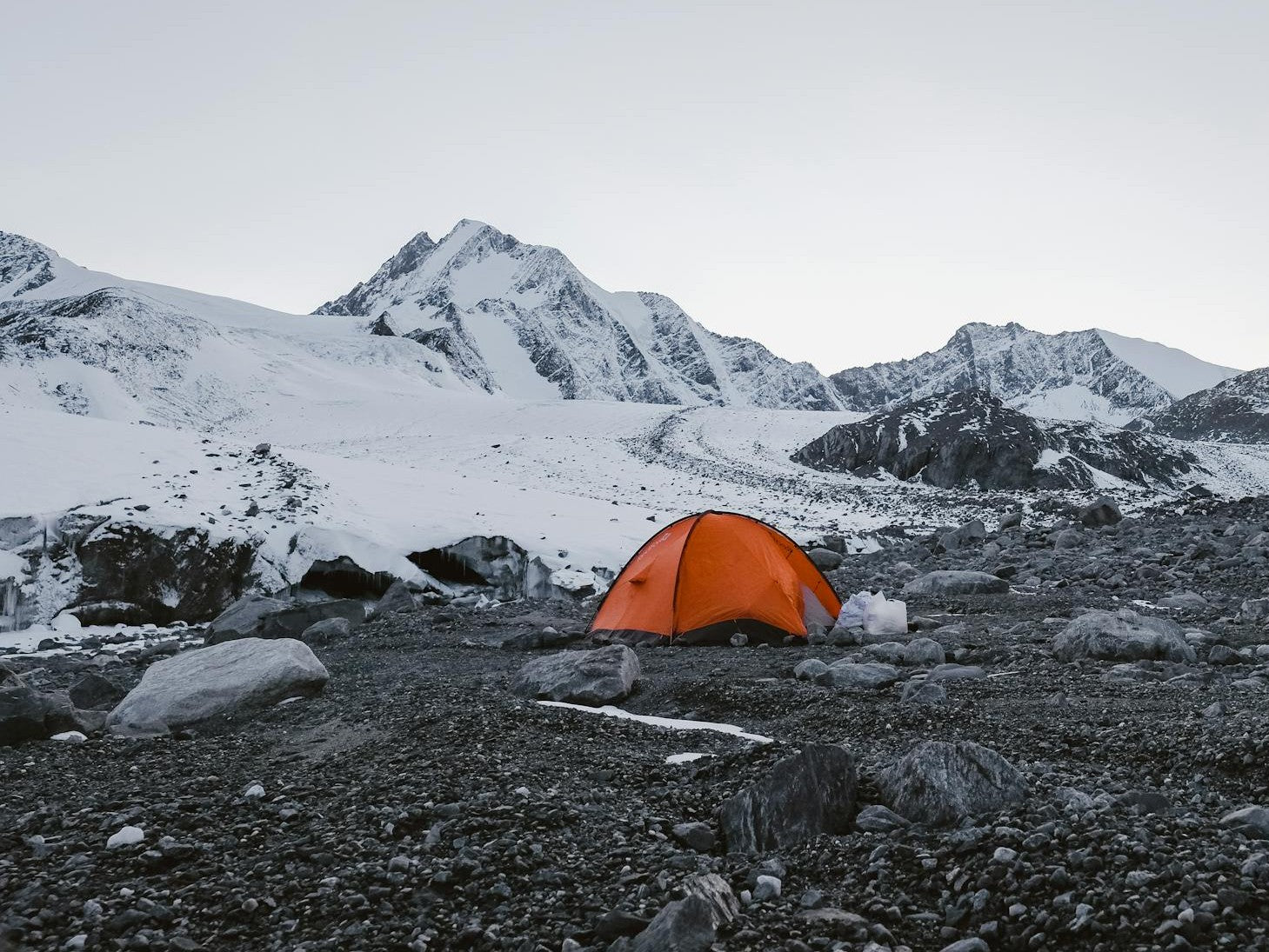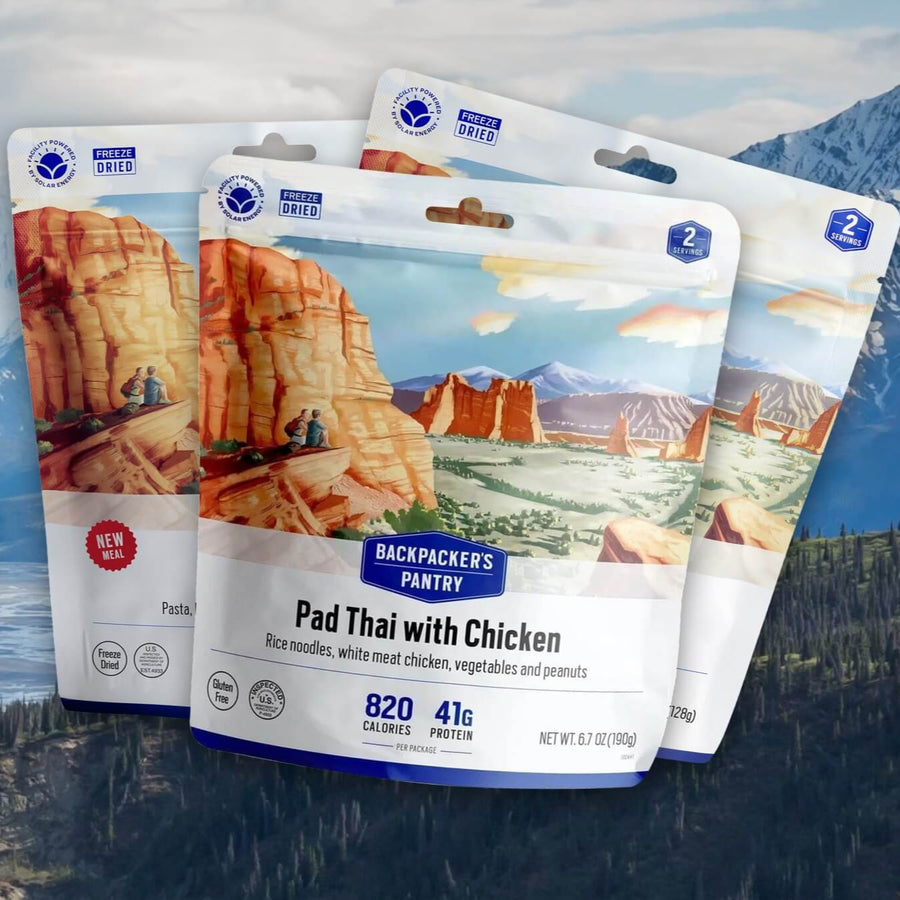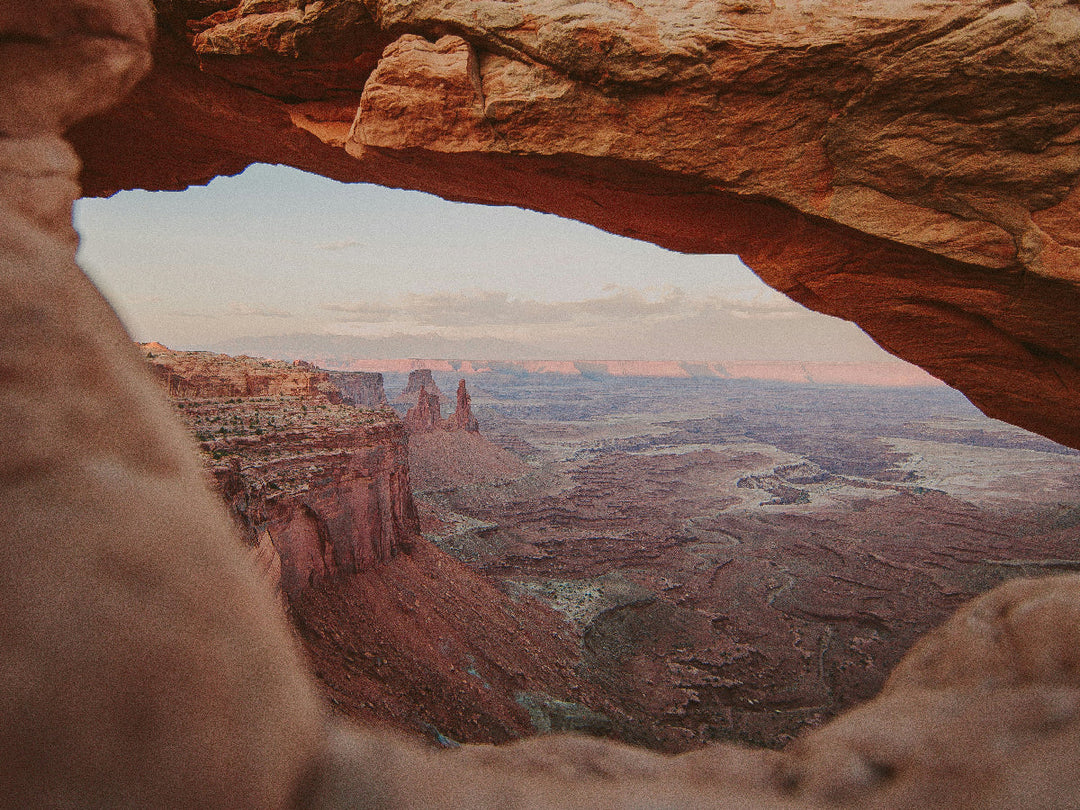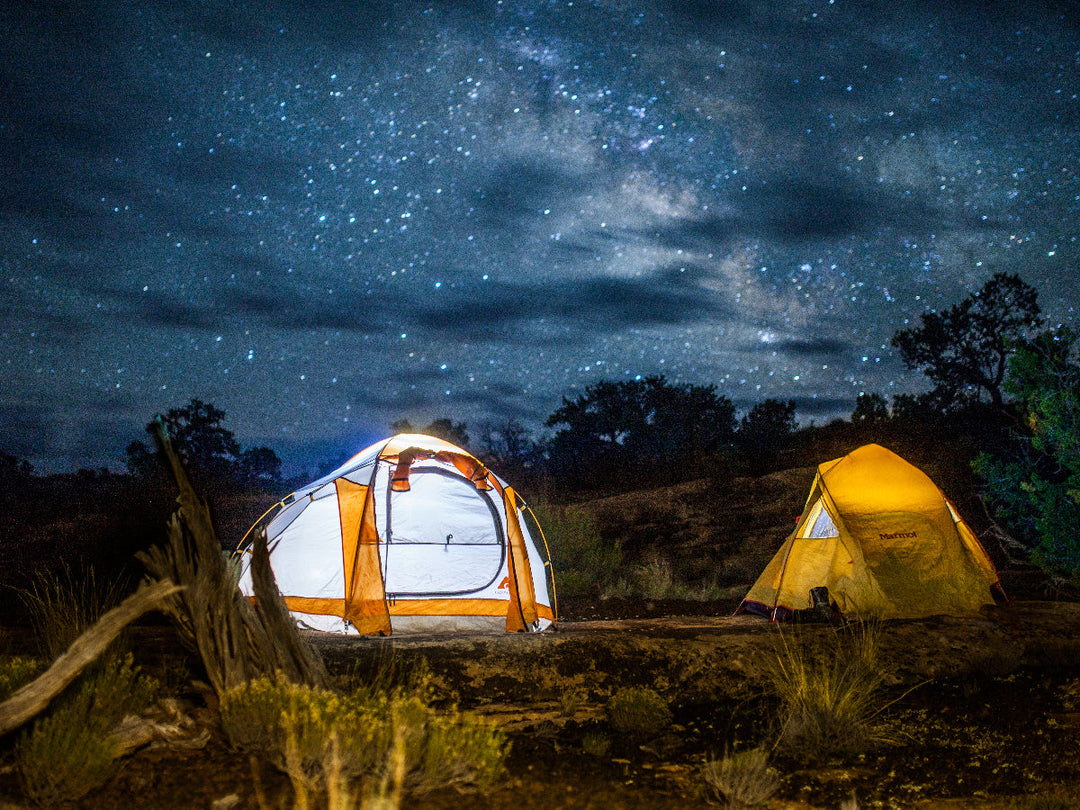Winter and Snow Camping for Beginners

Winter camping? Why would anyone want to do that!? We figured out how to build houses and central heating systems and you want to leave all of that behind?! Well, there are plenty of great reasons to spend the night outside in the winter. Maybe it’s just an interesting challenge for you; something you want to try to do to find out how strong you are. Maybe you’ve got a big trip or objective planned that requires a few nights spent out in the snow. Regardless, winter camping doesn’t have to be an ordeal.
With the right preparation, equipment, and mindset, winter camping can be comfortable and enjoyable. There’s something very special about the serenity of a snow-muffled night spent outdoors, so if you’ve ever wanted to camp during the winter, this guide will help you get started.
Essential Gear for Winter Camping
Generally, winter camping gear is just summer camping gear on steroids. More insulation, more weather resistance, more stability in high winds. Here’s a list of essentials to get you started, and then below we’ll go deeper on what some of these terms mean.
- Insulated sleeping bag: Look at the projected low temperatures for your campsite and find something with a temperature rating that gives you a solid margin of safety beyond that.
- Insulated sleeping pad: Sleeping pads have an R-value that tells you how warm they will be, look for a R-value of at least 5, and feel free to go even higher for extra comfort. Combining a simple foam pad with your air pad can also make a big difference.
- Winter-ready shelter: You’ll want either a four-season tent, or, for the more bold, a pyramid-style shelter. A pyramid, or “mid” shelter is a lightweight tent that uses your hiking or skiing poles as a support, instead of a dedicated frame. It doesn’t have a floor, so you can actually dig down into the snow to create more room under the pyramid. They’re generally much lighter and more packable than winter tents, which is nice, because everything is bulkier for winter.
- Stove: Canister-style stoves don’t always work well in cold temps, so we’d recommend something with pressurized fuel.
- Shovel: A small snow shovel is indispensable when snow camping. It will allow you to level out your campsite, build seating, and so much more.
- Extra clothes: We’ll get into this in the next section, but bring lots of layers.
- Extra food: your body will burn a lot of calories trying to stay warm, bring plenty of food to stay fueled.

How to Choose a Sleeping Bag for Winter Camping
Good sleeping bags will have two temperature ratings. These ratings are created via standardized testing so it’s easy to compare between brands. The first rating is a “comfort” rating. This is listed as a range of temperatures, in degrees. If the air temperature is within that range, you should be able to have a good night’s sleep in that sleeping bag. Of course, if it’s warmer than that range, you can always sleep with the bag open, to cool down.
The second rating is the lower limit rating. This is the absolute lowest temperature at which the warmest sleepers might still be comfortable in the bag. Unless you’re very confident that you don’t need more insulation, it’s a good idea to purchase a bag with a lower limit rating that’s a fair bit lower than you anticipate the temperatures to be.
Generally, there’s a linear relationship between sleeping bag cost, size, and temperature rating. So warmer bags will be more expensive, heavier, and less packable. So it can be tempting to buy a bag that’s almost warm enough for the conditions you anticipate. That’s a recipe for cold discomfort though. With sleeping bags, overkill is underrated. Get a bag that you’re very sure will be warm enough for your needs, and revel in the comfort even if the temperature drops lower.
Clothing and Layering Basics
The same fundamentals that apply to summer camping are relevant in the winter too. That means no cotton layers - synthetic or wool stays warmer when wet and deals with body moisture better. It also means thinking in systems, not just singular pieces. So pack a base layer that will be warm, soft, and comfortable against your skin, an insulating layer (or layers) that will keep the heat in, and shell layers that keep the wind and moisture out.
A great example is a merino top and long underwear as your base layer, a puffy jacket and puffy pants as your insulting layer, and a hard shell, waterproof breathable jacket and snow pants as your shell. We like to bring two sets of baselayers, so that you have a dry set to change into once you settle down for the night. You can bring your sweaty or damp layers into your sleeping bag at night to dry them out.
It’s also important to remember that in the winter you get colder faster when you’re not moving. So bring extra insulators for when you’re hanging out at camp. An insulated pair of puffy pants, or a puffy skirt don’t take up much room in your pack and go a long way to keep you comfortable while you’re hanging out around camp.
It’s a good idea to bring a variety of gloves - thinner liners that allow you to perform tasks around camp, along with thicker mittens to keep the blood circulating. Similarly, bring at least one warm beanie and a facemask, neck tube, or buff. Finally, don’t forget your feet. Pack spare socks so that you can change into something warm and dry, and make sure to bring some sort of camp shoe, slipper, or booty. This will go a long way towards keeping your feet warm and setting you up for a good night’s sleep.
Finally, remember that at night, the only warm place will be inside your sleeping bag. So if you have anything that you don’t want to freeze (contacts, camera batteries, etc) plan to bring it into your sleeping bag with you. It’s a good idea to bring a spare beanie or face mask that you can use as a bag for those items, instead of having them loose in your sleeping bag.
Choosing the Right Campsite
Choosing a campsite in the winter can be more complicated than in the summer. It’s harder to tell what’s under the snow, and you don’t want to set up camp on a buried stream or brush pile. But, on the flipside, it’s much easier to find, or make, a flat, level space to pitch your tent.
Generally, it’s a good idea to look for a spot that’s sheltered from the wind by trees or terrain features. If that’s not possible, you can build a wall out of snow to keep the breeze from whipping through your tent. Always make sure to camp far from avalanche terrain, and be aware of overhead hazards like trees - it sucks to have a load of snow dumped on your tent in the middle of the night.
Setting Up Camp in Winter Conditions
When you’re setting up camp, it’s very useful to have a plan and use it to divide the labor. Consider having one person set up the tent, while another builds a fire, and the third melts snow and boils water. And, by the way, plan on spending a lot of time boiling water. It’s wild how much snow you have to melt to make a few liters of drinkable water. It’s a good idea to get the stove going to heat water as soon as you choose a campsite, so that you’ll have warm drinks ASAP. Then you can start setting up the tent and inflating your sleeping pad.
One of the big bonuses of winter camping is that you can shape the terrain to your needs. If you have a pyramid-style shelter, you can dig out a kitchen and sleeping area, complete with seating and shelves, under the tent. Before setting your tent, or starting to dig in, pack out a nice space by stomp and and walking around.
Regardless, it’s a good idea to plan ahead. Get your sleeping situation all the way figured out, before it’s dark, so that when it’s time for bed, you can fall straight asleep instead of having to fumble in the dark.
Building and Managing a Winter Fire

Wildfire danger is generally much less in the winter, and a fire goes a long way toward shifting a winter camping experience from being survivable, to enjoyable. It’s a good idea to bring a lot of very dry kindling, as well as several lighters. Lighters like to stop working at the worst possible moment.
Gather as much dry firewood as you can, and build the fire slowly. Don’t just throw a bunch of wet wood in a pile and expect it to work. A small hatchet and saw go a long way when you’re gathering firewood. Be patient, and build the fire up gently. There’s nothing more frustrating than a smothered fire because you were too eager. And remember that snow falling on your fire will put it out. So don’t build it underneath anything snow-covered, as it heats up, the snow will slide off, into the fire.
Be aware that the fire will melt the snow around it, and sink deeper as it burns. So don’t put it anywhere problematic, where it could melt something valuable. Finally, remember that the remains of your campfire will still be there in the summer. So if you’re sleeping in a snow-covered parking lot, or near a trail, dispose of the remains of the fire in a good place the next morning.
Cold-Weather Sleeping Tips
Just like in the summer, getting a good night’s sleep outdoors in the winter comes down to two factors: gear, and preparation. The gear is simple. Make sure you’ve got a sleeping pad, tent, sleeping bag, and layering system rated for the temperatures you’re dealing with. Make sure you know how to set up all of those pieces of equipment, before your life depends on it. It’s much easier to learn how to set up a new tent in your warm living room than out in the cold dark woods.
Do your best to get your sleep system set up while you’re still fresh and have energy, so that it’s ready to go when you decide to sleep. That will make for a much less stressful evening.
Second, be prepared. Just because you have the right gear doesn’t mean you’re going to be comfortable. Take care of your body. Eat a big warm dinner. Stay hydrated. Going to bed hungry and thirsty is a recipe for a terrible night’s sleep. Make sure your sleeping pad is fully inflated. Make sure you’ve relieved yourself before you get all cozy. Make sure all your clothes are dry, and that you’ve got everything you might need during the night (headlamp, footwear, etc) close at hand. Set yourself up for success.
Food and Hydration in Cold Temperatures

The cold plays tricks on our bodies. It often suppresses our appetites and makes us feel like we’re not thirsty. Don’t listen to it! Take care of yourself. That means plenty of calories, and plenty of liquids. Keep track of how much you’re eating and drinking, and make a plan to eat and drink at regular intervals, whether or not you feel hungry or thirsty.
It’s a good idea to “hack” our appetites, by bringing food and drinks that activate our cravings. That means delicious meals that you’re actually excited to eat, as well as smaller snacks that pack a big flavor punch. It also can mean bringing powdered drink mix, like apple cider to keep you motivated to stay hydrated.
Eat more than you think you need to. Drink more than you think you need to. Your body will thank you later! It will help you stay fueled, keep moving effectively, and sleep well.
Staying Warm: Tips and Techniques
The biggest tip to stay warm in the winter is to stay dry. Do your best to ward off moisture from the outside (rain, snow, etc) and from the inside (sweat). And, if you do get wet, change into dry clothes quickly, and dry your wet layers near the fire. Dry gloves, base layers, and socks make a huge difference. Most winter emergency situations occur because someone got wet, and then couldn’t dry out again. Do your absolute best to not get wet, and if you do, have a plan to dry out quickly.
If you tend to sleep cold, fill a water bottle or two with boiling water before you go to bed and stuff them into the bottom of your sleeping bag. This will help keep your extremities warm.
Finally, plan your visits with Mother Nature carefully. Yes, it’s cold outside the tent, but you’ll warm back up fast if you go water a tree and then get right back to bed. Trying to “hold it” will only leave you colder in the long run.
Staying Safe: Winter Camping Hazards to Avoid
Winter camping brings a few additional hazards into the equation. We already touched on avalanche terrain (don’t sleep in it) and overhead hazards (don’t sleep under them.) But it’s also worth being aware of wildlife. Just because most animals are less active in the winter doesn’t mean they won’t be a problem. Store your food intelligently and out of reach.
The biggest factor though, is the weather. It can shift so quickly, from a sunny, balmy March day to a full-on blizzard. Keep an eye on the weather forecast, and pack for the worst-case scenario. If a storm starts to roll in, be prepared to break up camp quickly and get home to safety. Always be prepared to change your plans if the weather changes rapidly.
Leave No Trace Winter Edition
Snow lends a false blanket of security to Leave No Trace ethics. It feels like you can “get away” with things since the evidence will be buried in more snow. But Leave No Trace still applies in the winter. Don’t camp close to waterways. Manage your waste, and the refuse from your fire carefully. Try to leave everything better than you found it. You might not ever see the results, but come summer, all your misdeeds will be painfully obvious.
That’s especially true with toilet paper. When possible, wipe with snow. When it’s not, try to burn your toilet paper - burying it in the snow doesn’t help at all when spring comes around.
Like summer backpacking or really any kind of camping, winter camping is a personal and learning process. As you gain more experience, you’ll find the things that work best for you, like those small things that make your life so much easier, or the items that may be better left at home. Winter adds a whole new element and challenge, but also some great rewards, so bundle up and give it a try!





